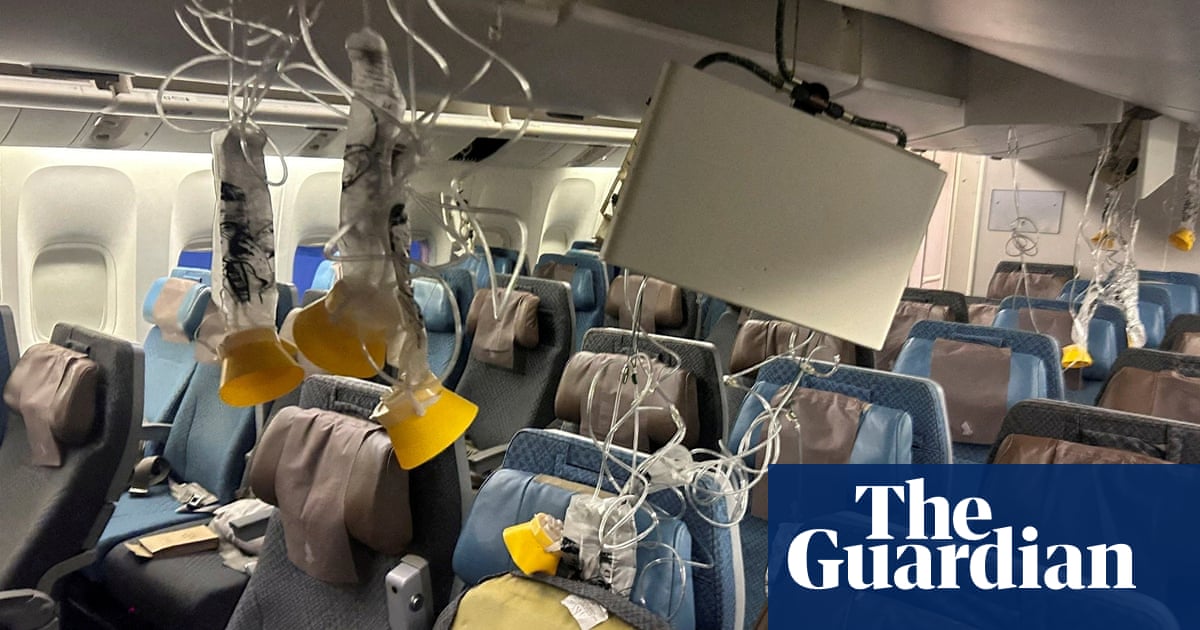
The Singapore Airlines flight hit by severe turbulence last week dropped 54 metres in altitude in less than five seconds, preliminary findings from an investigation show.
A 73-year-old British passenger died of a suspected heart attack and dozens of people were injured after flight SQ321 from London to Singapore encountered what the airline described as sudden, extreme turbulence while flying over Myanmar. The flight carrying 211 passengers and 18 crew diverted to Bangkok for an emergency landing.
“The aircraft experienced a rapid change in G (gravitational force) … This likely resulted in the occupants who were not belted up to become airborne,” Singapore’s transport ministry said in a statement on a report by the Transport Safety Investigation Bureau.
“The vertical acceleration changed from negative 1.5G to positive 1.5G within 4 seconds. This likely resulted in the occupants who were airborne to fall back down,” it said, citing information extracted from the flight data and cockpit voice recorders.
“The rapid changes in G over the 4.6 seconds duration resulted in an altitude drop of 178ft (54m), from 37,362ft to 37,184ft. This sequence of events likely caused the injuries to the crew and passengers.”
Shaken passengers described scenes of chaos in the moments after the incident. The turbulence threw people upwards then into the aisle, leaving many with head wounds.
Photos of the cabin showed gashes in the overhead cabin panels, oxygen masks and panels hanging from the ceiling and luggage strewn around. One passenger said some people’s heads had slammed into lights above the seats and broken the panels.
Singapore Airlines said it acknowledged the report and was cooperating fully with the investigation. “We are committed to supporting our passengers and crew members who were onboard SQ321 on that day, as well as their families and loved ones,” it said in a statement.
Late on Tuesday the airline said 45 people who were onboard the flight were still in Bangkok, including 28 passengers receiving medical treatment in hospital.
Among those initially hospitalised were patients with spinal cord injuries and some with brain and skull injuries, according to Thai medical officials.
The preliminary report said that upon the flight encountering slight vibrations there was an uncommanded increase in altitude, resulting in the autopilot pitching the aircraft downwards. There was an increase in airspeed and the pilots responded by applying speed brakes.
“While managing the airspeed … it was heard that a pilot called out that the fasten seatbelt sign had been switched on,” it said.
The investigation team comprised Singaporean investigators, representatives from Boeing and US officials from the National Transportation Safety Board (NTSB) and the Federal Aviation Administration (FAA). The Singapore transport ministry said the probe was ongoing.
Source: theguardian.com


















